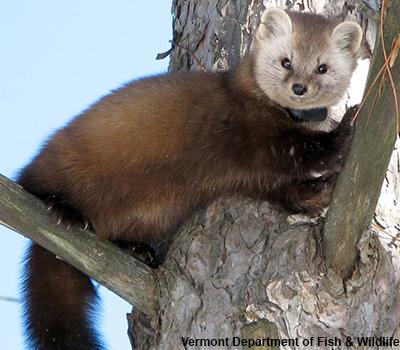Modeling and Mapping the Distribution of American Marten in Vermont

The American marten is a forest-dependent carnivore that historically ranged across the Northern Forest from the Canadian border to Massachusetts. The species declined to near extinction in the region from overhunting, habitat loss, and reestablishment of competitors like fisher. Martens are listed as a high-priority Species of Greatest Conservation Need in Vermont and by 2010, were thought to be extinct in the state, despite a reintroduction effort. In recent years, martens have been slowly recolonizing far northern and southern Vermont. A primary concern is how best to prioritize areas for conservation that facilitate the species’ recovery. Martens generally require movement corridors and large expanses of forest habitat.
NSRC researchers set out to map marten distribution and provide a way for wildlife managers to assess the quality of the landscape for martens in Vermont. With Therese Donovan in the Vermont Cooperative Fish and Wildlife Research Unit, they developed a new modeling approach that uses solicited expert opinions to develop a model to describe marten habitat and distribution. They expanded their focal area beyond Vermont to include New Hampshire, Maine, and upstate New York where they contacted expert trappers, state and federal biologists, state and federal researchers, and academic researchers to participate.
NSRC researchers also identified corridors of movement between northern and southern populations in Vermont. They mapped connectivity between populations and identified barriers and pinch-points to movement that could help the state and non-profit organizations prioritize conservation efforts. This is especially important for evaluating the role of protected areas as “stepping stones” for recolonization.
